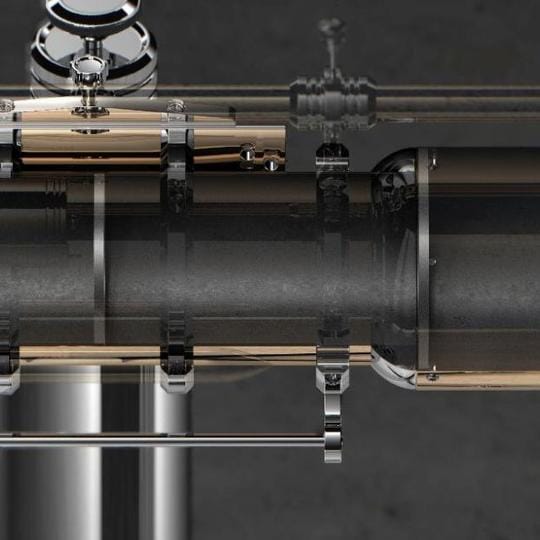3D visualizer Patrick Ng tested V-Ray for 3ds Max’s physically accurate rendering with a precise telescope model. Find out how he did it—and if it worked.
One of the biggest advantages of physically based rendering (PBR) is that computer-generated objects and surfaces respond to light just as they would in the real world. But this leads to further queries, such as: would an accurately CG-modeled telescope actually magnify a distant object?
It’s exactly this question that Patrick Ng wanted to answer with his telescope project. Armed with V-Ray for 3ds Max, photos of a deluxe telescope, and an accurately-scaled billboard of the moon, he set about modeling a millimeter-precise digital telescope and a luxurious apartment for it. Then, he shot for the moon.
Join Patrick to learn more about how key V-Ray for 3ds Max features helped complete this fascinating project.

About Patrick
Patrick is a senior creative visualizer focused on everything from products and fragrances to interior environments for high-end hotels and lounges. He has been crafting visuals for the past 10 years in design agencies and firms such as Holmes and Marchant, Hirsch Bedner Associates, and NiCE Ltd.
How did you come up with the telescope idea?
Patrick Ng: I owned an achromatic refractor telescope years ago, so I’ve thought about carrying out this test for some time. As far as I know, no one’s tried it before!
Though I specialize in products and interiors in my day job, I tend not to conform to these norms when it comes to personal work. Instead, I explore weird ideas—even if they take months of work to create. This CGI lens experiment is one such idea.
Lenses are usually created in schematic, technical-looking CAD software that uses solid lines to represent light or lines of focus. However, as a V-Ray user since 2008, it was a curious thought to see whether the rendering engine can visualize this process. It would be a great test to see whether a CGI telescope rendered in V-Ray can work like the real thing given the correct lens profile, physically correct Index of Refraction (IOR), focal length, and eyepiece arrangement.
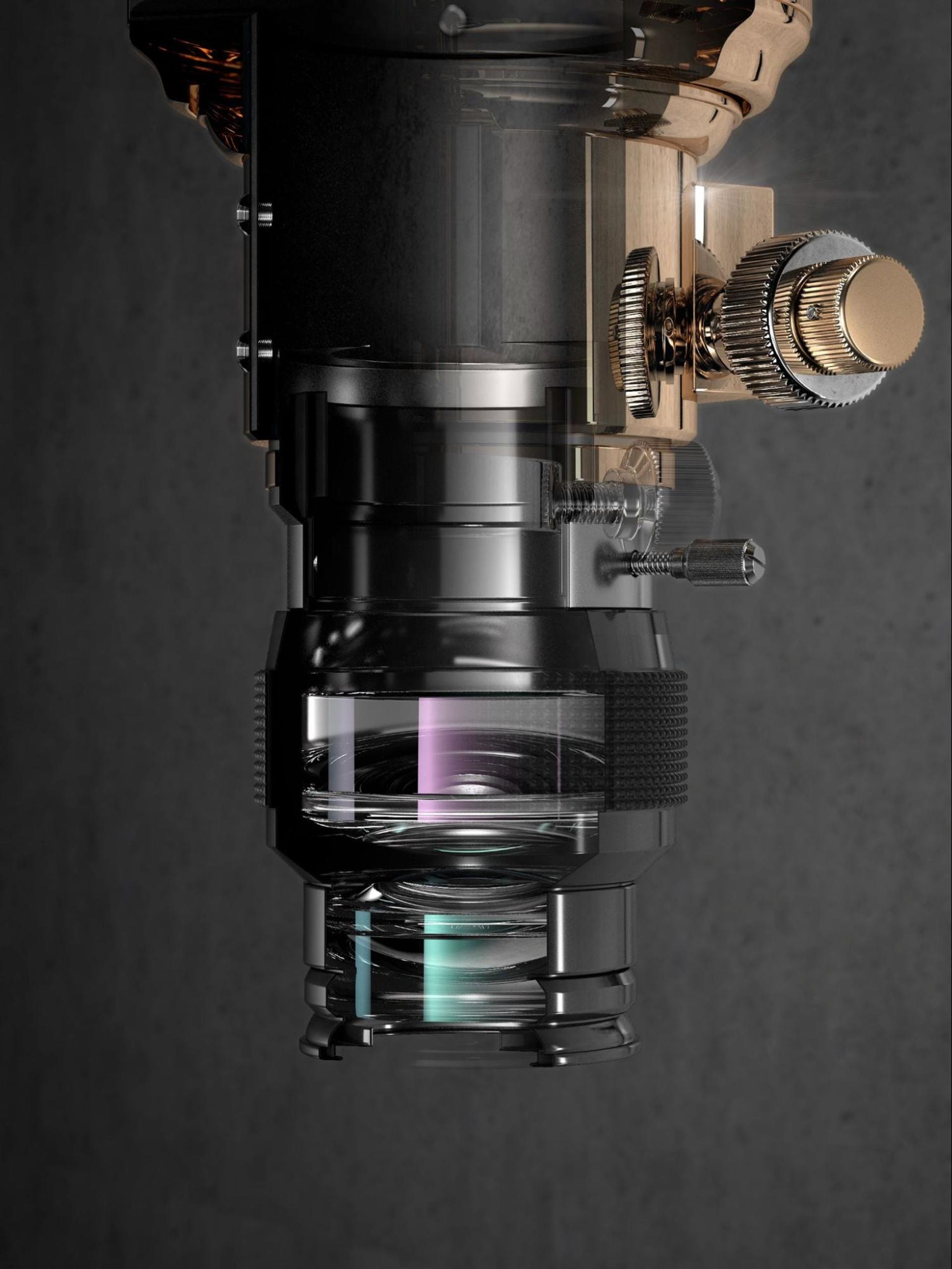
How did you model the telescope? What did you use for reference?
PN: I could have carried out this test with a basic lens and cylindrical tube. However, I also wanted to use this test as an exercise in aesthetics! I found this amazing built-to-order handmade telescope brand from the UK called Moonraker Telescopes, which has had its telescopes featured in the Netflix series Altered Carbon. I used photographs of this telescope as a basis for modeling it.
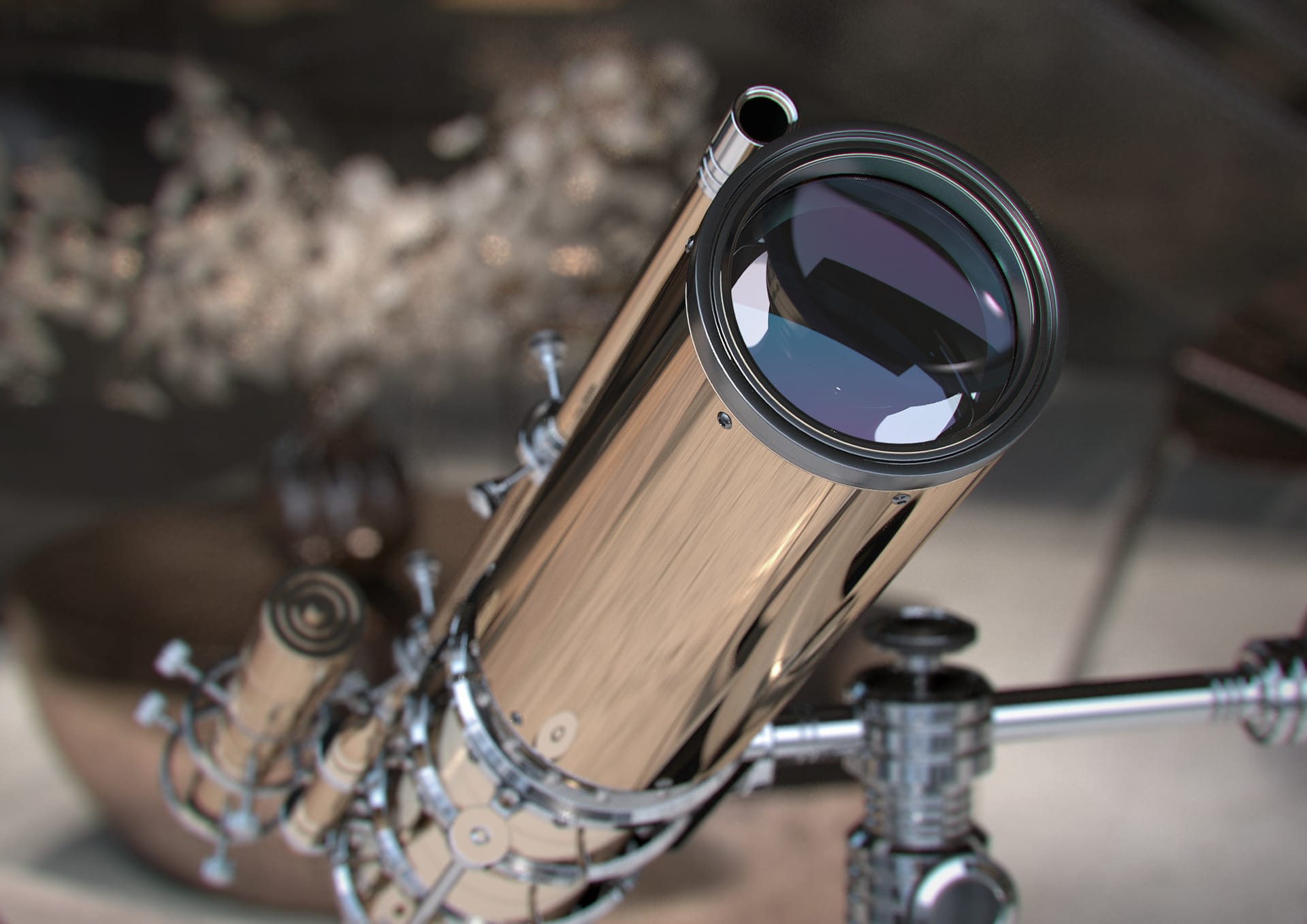
The lenses must have been critical to get right—how did you ensure they were accurate?
PN: I modeled the lenses based on achromat refractor telescope lens diagrams. An Achromat lens arrangement has two components in its objective lens formation: a convex portion coupled with a concave element to counteract dispersion and limit chromatic aberration.
The Plössl eyepiece was another crucial element to get right. This is the part at the other end of the telescope where you place your eye to view the image. The eyepiece consists of multiple lens elements, even more than the objective lens—so more things could have gone wrong.
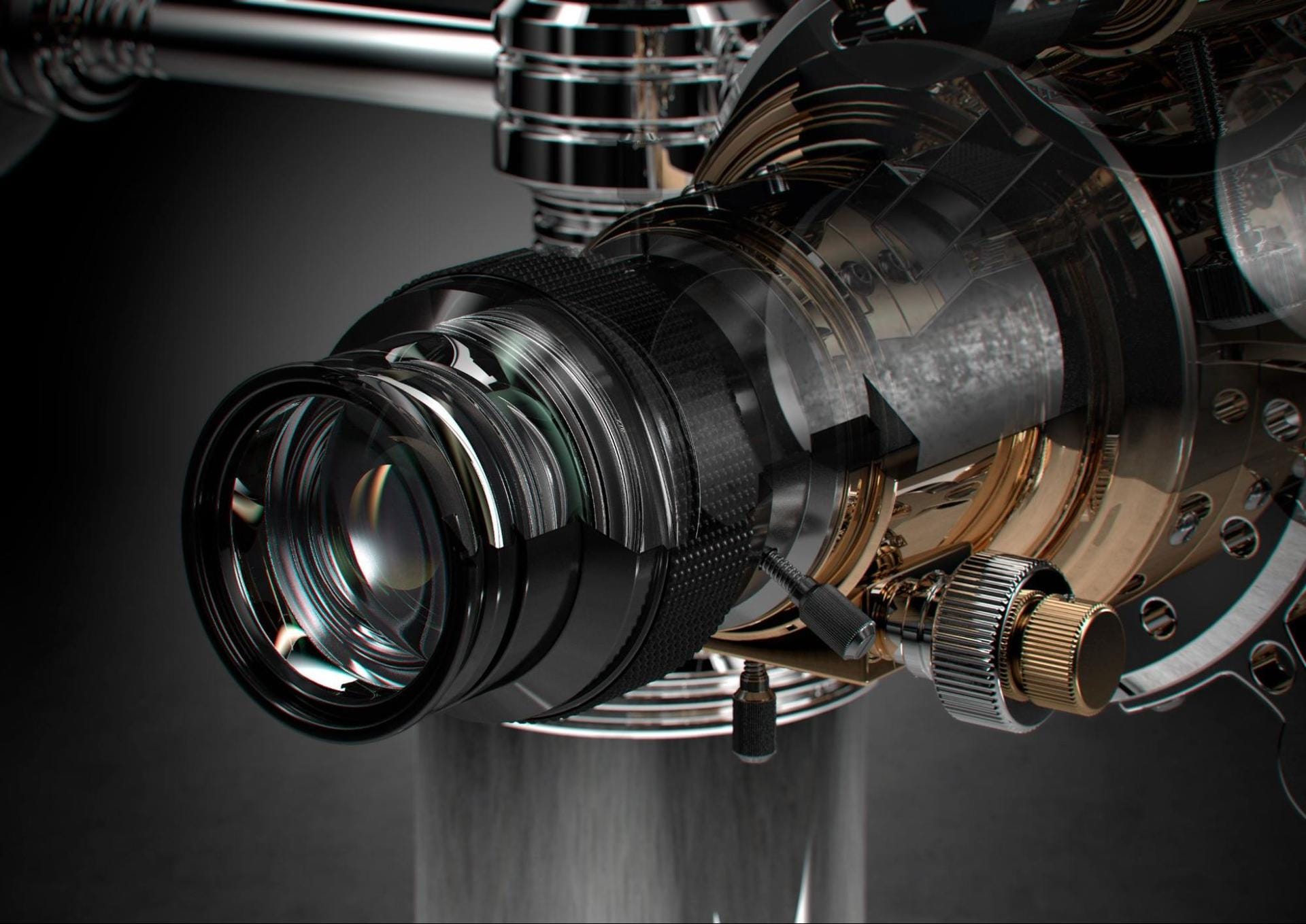
You situated the telescope in a swish apartment. How did you create this?
PN: My original plan was to house the telescope in an abstract environment, like an almost empty-looking art gallery. However, the main aesthetic direction of Moonraker telescopes seems to fit better in a high-end apartment, almost as a piece of sculptural art. That was how the idea for the Moonraker loft interior started; it’s an industrial loft apartment full of astronomical themes. It is the most likely place to contain a piece of functional art such as the Moonraker telescope.
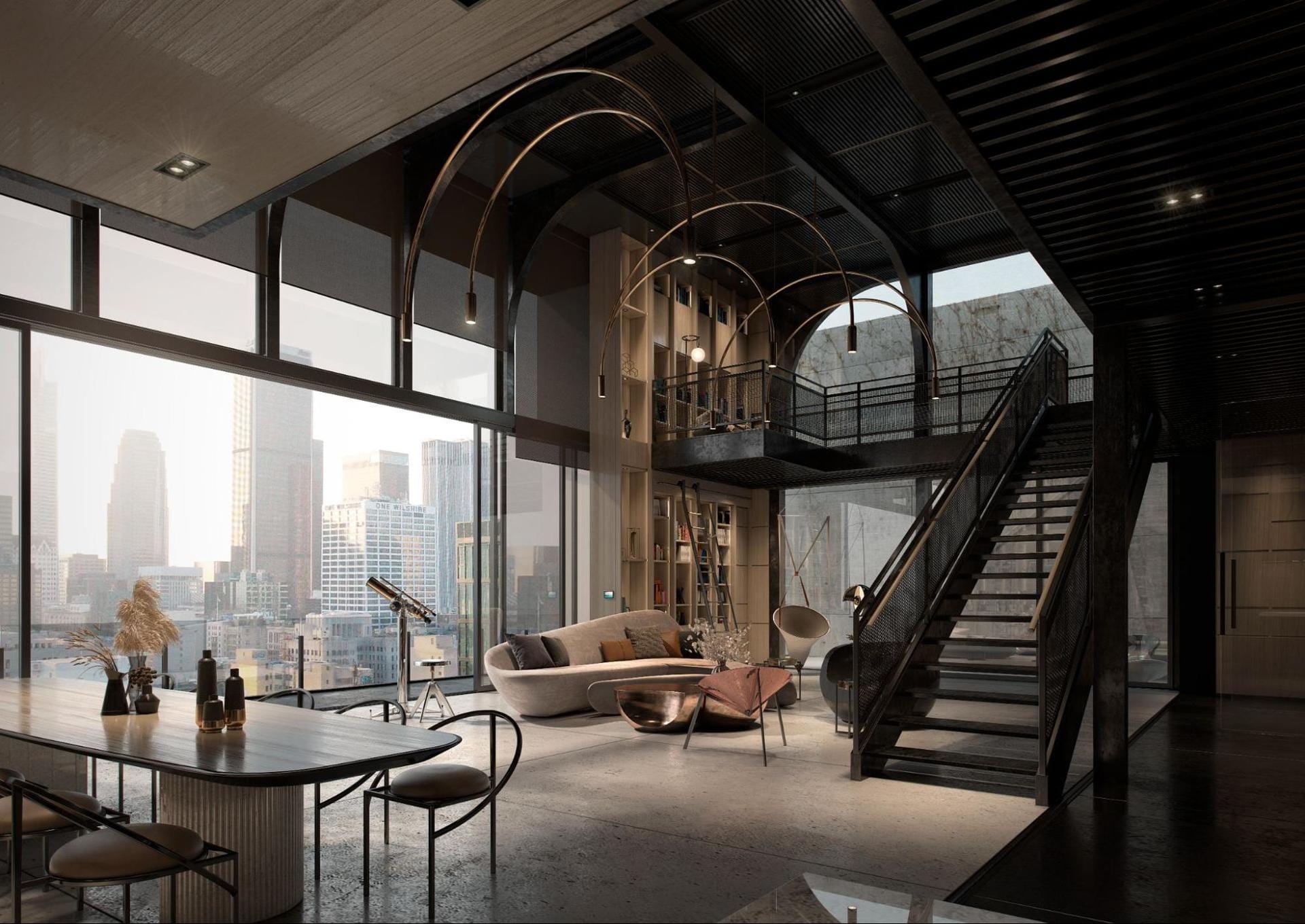
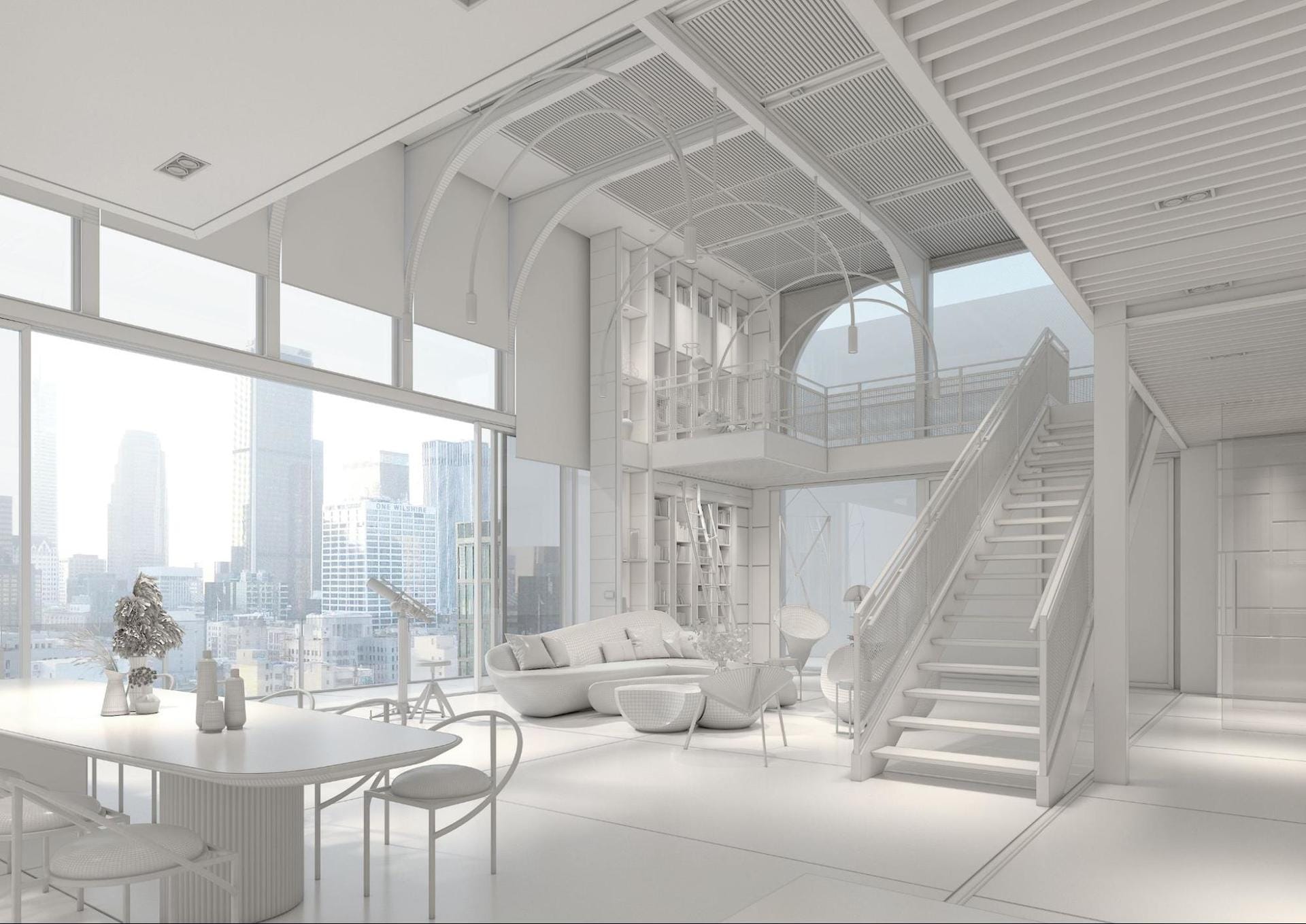
Did the telescope work first time?
PN: Admittedly, it did not work correctly at first. There was always going to be some trial and error due to the finer details of the convex/concave lens shape, as well as focal length concerns. The complexity increases once you include the eyepiece that uses a Plössl lens arrangement, which contains several lens elements. Then you have to factor in refraction IOR and camera settings (to simulate the human eye). A lot of things didn't work as expected! It took days of trial and error before I got to the final result.
The use of V-Ray IPR to quickly test out lens shape, materials, focal length, and camera settings made a big difference in the feasibility of this project."
Patrick Ng, Senior Creative Visualizer

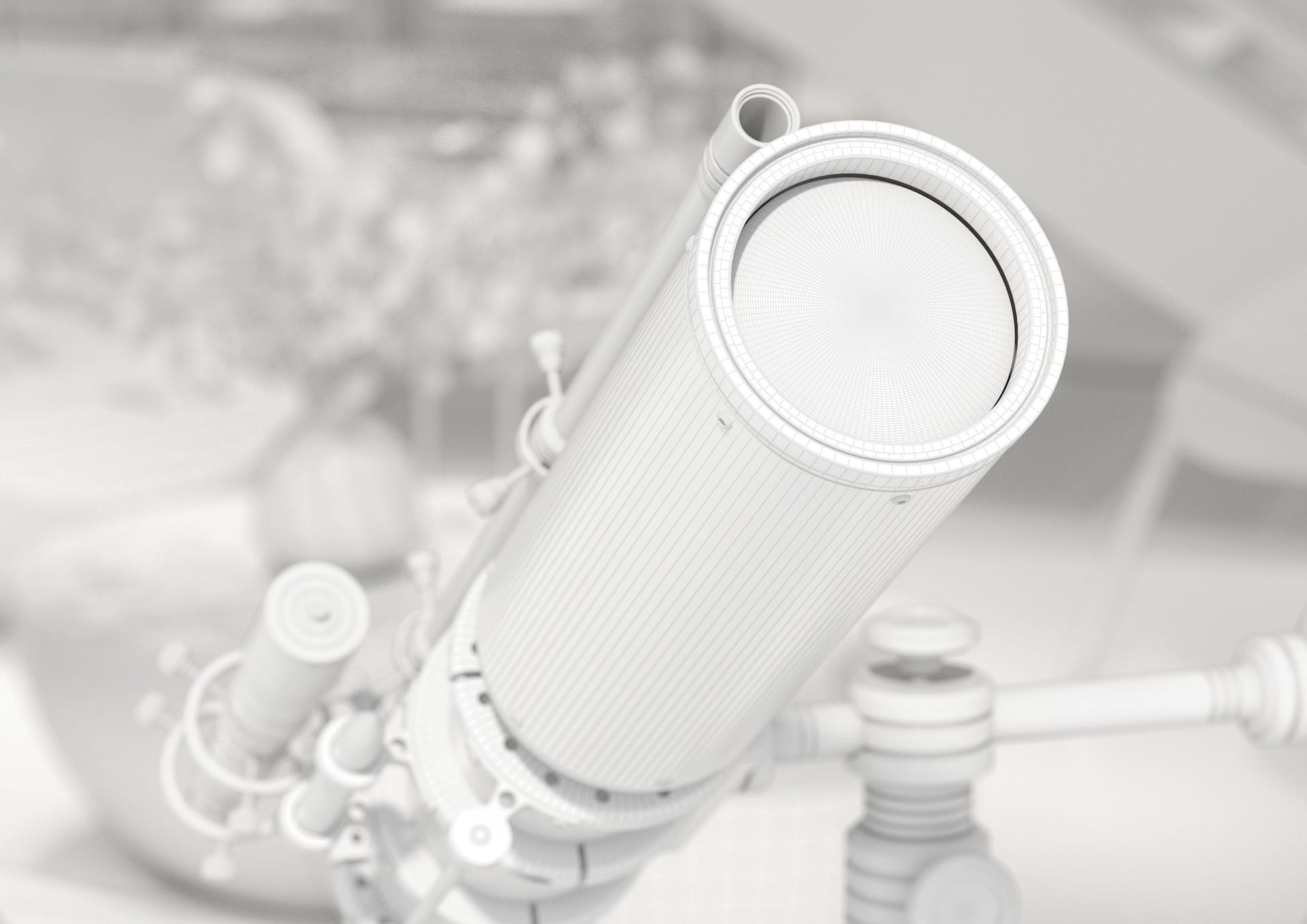
What feedback have you had on the project?
PN: The feedback on this project has been positive so far. Some people mentioned that they have thought about this idea but did not test it out.
Mark Turner from Moonraker Telescopes chanced upon this project when he typed in his company name into search engines. He reached out to me on Behance with positive comments about the project and asked for permission to use the rendered telescope images on Facebook and astronomy forums.
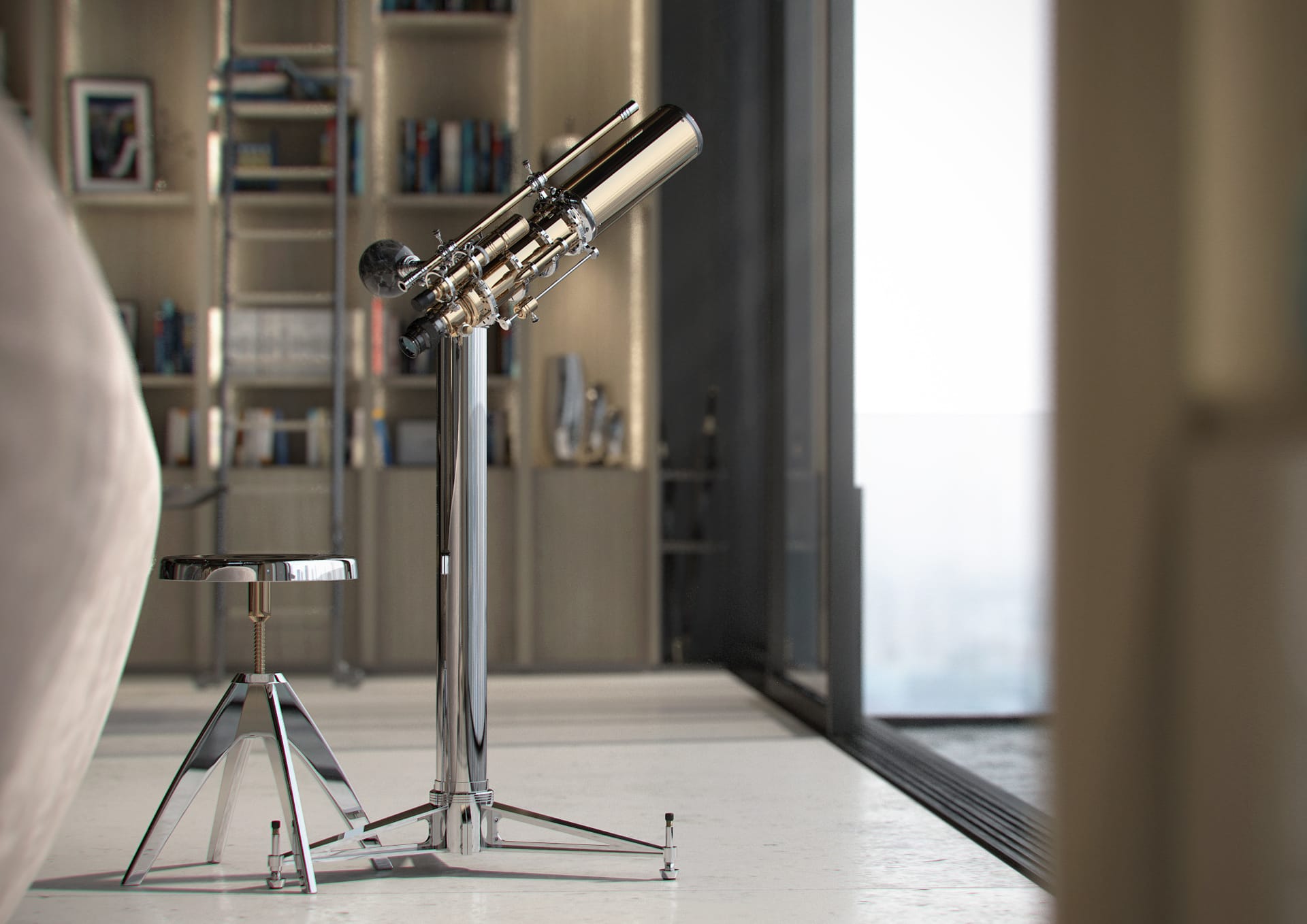
Do you have any plans to expand on or reuse the telescope project?
PN: This project is a one-off. Now that I've demonstrated the idea, I will probably move on to some other interesting ideas that no one's attempted before— this time, with Chaos Phoenix for 3ds Max! However, I have plans to upload parts of this project, at least the bare lens and camera elements, for anyone to download so they can test V-Ray's capabilities.

